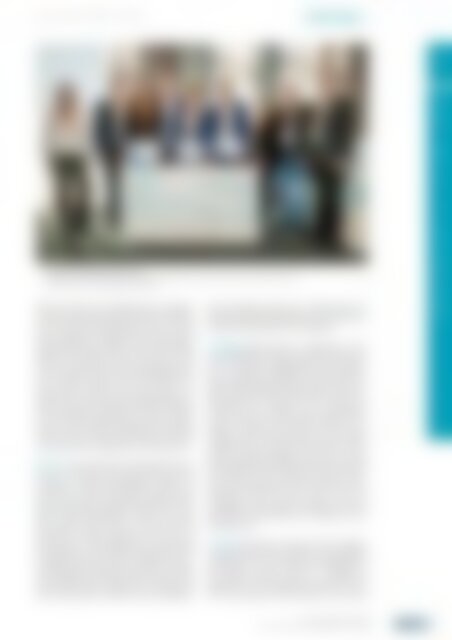atw - International Journal for Nuclear Power | 05.2022
Ever since its first issue in 1956, the atw – International Journal for Nuclear Power has been a publisher of specialist articles, background reports, interviews and news about developments and trends from all important sectors of nuclear energy, nuclear technology and the energy industry. Internationally current and competent, the professional journal atw is a valuable source of information. www.nucmag.com
Ever since its first issue in 1956, the atw – International Journal for Nuclear Power has been a publisher of specialist articles, background reports, interviews and news about developments and trends from all important sectors of nuclear energy, nuclear technology and the energy industry. Internationally current and competent, the professional journal atw is a valuable source of information.
www.nucmag.com
Sie wollen auch ein ePaper? Erhöhen Sie die Reichweite Ihrer Titel.
YUMPU macht aus Druck-PDFs automatisch weboptimierte ePaper, die Google liebt.
<strong>atw</strong> Vol. 67 (2022) | Ausgabe 5 ı September<br />
| Young Scientist‘s Workshop award ceremony<br />
from left to right: Dr. Katharina Stummeyer, Frank Apel, Julia Krieger, Marc Kirsch, Nelson Felipe Rincón Soto, Eduard Diaz-Pescador,<br />
Souad Pederzani, Prof. Dr. Jörg Starflinger, Markus Brodoch.<br />
Silicate Concrete and Applying then to Simulations<br />
of Several Experiments with AC²-COCOSYS”.<br />
As part of the external validation of the AC² model<br />
basis, simulations of Molten Core-Concrete Interactions<br />
(MCCI) are conducted, in particular BETA,<br />
MOCKA and OECD-CCI tests. The focus of this<br />
work is the calculation of the decomposition parameter<br />
of silicate concrete and the modelling of the<br />
heat transfer between melt and concrete. An<br />
approach <strong>for</strong> calculating the decomposition parameters<br />
of concrete is presented and the influences<br />
of the individual components are shown. Depending<br />
on the calculated decomposition properties<br />
of the concrete and the heating power, the effective<br />
heat transfer coefficients can be determined.<br />
M. Kirsch reported about “Experimental investigation<br />
on the long-term operational behaviour of<br />
two-phase closed thermosyphon bundles <strong>for</strong><br />
passive heat transfer from spent fuel pools under<br />
normal, abnormal, and accident conditions”. Twophase<br />
closed thermosiphons (TPCT) are passive<br />
heat transfer devices that can ensure the safe<br />
operation of nuclear facilities in the event of a<br />
power failure or other malfunction. In the present<br />
investigations at the ATHOS (Atmospheric Thermosiphon<br />
cOoling System) test facility at University<br />
of Stuttgart, the long-term operation of TPCTs<br />
under different heat transfer rates, temperatures<br />
and cooling airflow conditions were investigated.<br />
The investigations show that a reliable long-term<br />
operation is feasible. Maximum heat transfer rates<br />
of up to 900 W per TPCT were achieved.<br />
J. Krieger talked about the „Simulation of the<br />
OSU-MASLWR Test Facility with the system Code<br />
AC ² ”. To evaluate the applicability of AC ² -ATHLET<br />
<strong>for</strong> the simulation of SMRs, the experimental test<br />
facility OSU-MASLWR (Oregon State University-<br />
Multi Application Small Light Water Reactor) is<br />
simulated and compared with experimental<br />
results. The focus is on the primary loop driven by<br />
natural convection and the heat transfer in the<br />
helically coiled steam generator. The currently<br />
available data of the ICSP 3 (<strong>International</strong> Collaborative<br />
Standard Problem) test serve as a basis<br />
<strong>for</strong> the input deck modelling. The results show that<br />
AC ² -ATHLET is able to model the natural circulation<br />
in good agreement, but that deviations of the<br />
temperature and mass flow course occur. By<br />
increasing the heat transfer, qualitative as well as<br />
quantitative improvements are achieved on the<br />
secondary side.<br />
F. Krist per<strong>for</strong>med an “Analysis of the AC ² Models<br />
regarding Fission Product Release using PHÉBUS<br />
experiments.” For the analysis and validation of<br />
the accident analysis code AC ² – ATHLET-CD,<br />
simulations of the experiments Phébus FPT1 and<br />
FPT3 are presented and discussed. The release<br />
KERNTECHNIK 2022 · 21. – 22. JUNI · LEIPZIG 71<br />
Special | KERNTECHNIK 2022<br />
BEST PAPER AWARD YSW ı Conference Report ı Jörg Starflinger
















